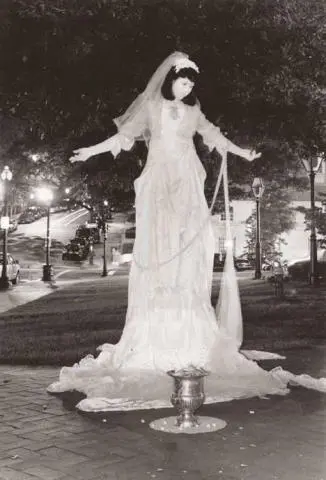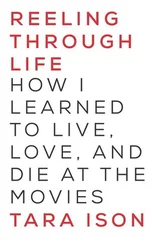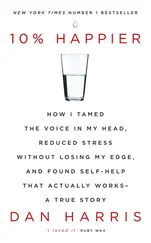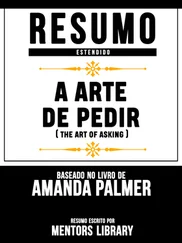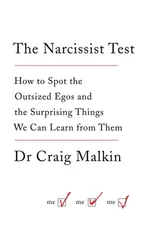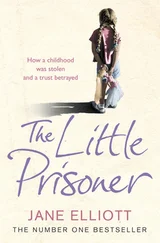did you ever notice that thislooks like this?
the shapes on this leaf look like the cracks in this puddle of ice
which look like the veins on the back of my hand
which look like the hairs stuck to the back of her sweater…
Collecting the dots. Then connecting them. And then sharing the connections with those around you. This is how a creative human works. Collecting, connecting, sharing.
All artists work in different mediums, but they also differ when it comes to those three departments. Some artists love the act of collecting . We might call this experiencing, or emotionally and intellectually processing the world around us: the ingredients—the puddles of ice, the sweater—that go into the poetic metaphor. Or the wider and longer-term collection: the time it takes to fall in and out of love, so that you can describe it in song, or the time it takes a painter to gaze at a landscape before deciding to capture it on canvas. Or the nearly three years Thoreau needed to live simply on the side of a pond, watching sunrises and sunsets through the seasons, before he could give Walden to the world.
Some artists devote more time to connecting the dots they’ve already collected: think of a sculptor who hammers away for a year on a single statue, a novelist who works five years to perfect a story, or a musician who spends a decade composing a single symphony—connecting the dots to attain the perfect piece of art. Thoreau himself needed another three years after his time in the cabin to distill and connect his experiences into the most beautiful and direct writing possible.
Like most stage performers, I’ve always been most passionate about the final phase: the sharing . There are lots of ways to share. Writers share when someone else reads or listens to their words in a book, a blog, a tweet. Painters share by hanging their work, or by sliding the sketchbook to a friend across the coffee-shop table. Stage performers also collect and connect (in the form of experiencing, writing, creating, and rehearsing), but there is a different kind of joy in that moment of human-to-human transmission: from you to the eyes and ears of an audience, whether fireside at a party or on a stage in front of thousands. I’m a sharing addict. But no matter the scale or setting, one truth remains: the act of sharing, especially when you’re starting out, is fucking difficult.
There’s always a moment of extreme bravery involved in this question:
…will you look?
It starts when you’re little. Back in the field: the veins of the leaf looked like your hand, and you said it, out loud, to the kids walking next to you.
You may have seen the lights go on in their eyes, as you shared your discovery— Whoa, you’re right! Cool —and felt the first joys of sharing with an audience. Or you may have been laughed at by your friends and scolded by the teacher, who explained, patiently:
Today isn’t “looking for patterns” day .
This is not the time for that .
This is the time to get back in line, to fill in your worksheet, to answer the correct questions .
But your urge was to connect the dots and share, because that , not the worksheet, is what interested you.
This impulse to connect the dots—and to share what you’ve connected—is the urge that makes you an artist. If you’re using words or symbols to connect the dots, whether you’re a “professional artist” or not, you are an artistic force in the world.
When artists work well, they connect people to themselves, and they stitch people to one another, through this shared experience of discovering a connection that wasn’t visible before.
Have you ever noticed that thislooks like this?
And with the same delight that we took as children in seeing a face in a cloud, grown-up artists draw the lines between the bigger dots of grown-up life: sex, love, vanity, violence, illness, death.
Art pries us open. A violent character in a film reflects us like a dark mirror; the shades of a painting cause us to look up into the sky, seeing new colors; we finally weep for a dead friend when we hear that long-lost song we both loved come unexpectedly over the radio waves.
I never feel more inspired than when watching another artist explode their passionate craft into the world—most of my best songs were written in the wake of seeing other artists bleed their hearts onto the page or the stage.
Artists connect the dots—we don’t need to interpret the lines between them. We just draw them and then present our connections to the world as a gift, to be taken or left. This IS the artistic act, and it’s done every day by many people who don’t even think to call themselves artists.
Then again, some people are crazy enough to think they can make a living at it.
I could make a dress
A robe fit for a prince
I could clothe a continent
But I can’t sew a stitch
I can paint my face
And stand very very still
It’s not very practical
But it still pays the bills
I can’t change my name
But I could be your type
I can dance and win at games
Like backgammon and Life
I used to be the smart one
Sharp as a tack
Funny how that skipping years ahead
Has held me back
I used to be the bright one
Top in my class
Funny what they give you when you
Just learn how to ask
I can write a song
But I can’t sing in key
I can play piano
But I never learned to read
I can’t trap a mouse
But I can pet a cat
No, I’m really serious!
I’m really very good at that
I can’t fix a car
But I can fix a flat
I could fix a lot of things
But I’d rather not get into that
I used to be the bright one
Smart as a whip
Funny how you slip so far when
Teachers don’t keep track of it
I used to be the tight one
The perfect fit
Funny how those compliments can
Make you feel so full of it
I can shuffle, cut, and deal
But I can’t draw a hand
I can’t draw a lot of things
I hope you understand
I’m not exceptionally shy
But I’ve never had a man
That I could look straight in the eye
And tell my secret plans
I can take a vow
And I can wear a ring
And I can make you promises but
They won’t mean a thing
Can’t you just do it for me, I’ll pay you well
Fuck, I’ll pay you anything if you could end this
Can’t you just fix it for me, it’s gone berserk,
Fuck, I’ll give you anything if
You can make the damn thing work
Can’t you just fix it for me, I’ll pay you well,
Fuck, I’ll pay you anything
If you can end this
Hello, I love you won’t you tell me your name?
Hello, I’m good for nothing
will you
love
me
just
the
same
—from
The Dresden Dolls , 2003
Iwas twenty-two, I’d just graduated from college, and I really, really didn’t want to get a job.
Читать дальше

